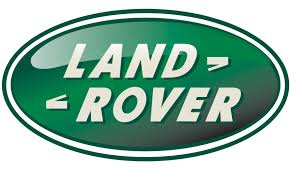Freelander System Description and Operation

ENGINE MANAGEMENT SYSTEM - SIEMENS
DESCRIPTION AND OPERATION 18-4-31
From 2003 Model Year
New injectors are introduced for 2003 model year. The air assist feature is deleted and a standard design injector
installed. The deletion of the air assist injectors also required modifications to the fuel rail, inlet manifold and clean air
duct.
The injectors are located in the inlet manifold and sealed with O-ring seals. The injectors are attached to the fuel rail
with clips and sealed with O-ring seals. A two pin connector on the injector allows for the attachment of the engine
harness connector.
Each injector contains a pintle type needle valve and a solenoid winding. The needle valve is held closed by a return
spring. The solenoid winding of each injector receives a 12 volt supply from the ECM relay in the engine compartment
fusebox. To inject fuel, the ECM supplies an earth path to the solenoid winding, which energises and opens the needle
valve. When the needle valve opens, the two nozzles direct a spray of atomised fuel onto the back of each inlet valve.
All Models
Each injector delivers fuel once per engine cycle, during the inlet stroke. The ECM calculates the open time (duty
cycle) of the injectors from:
l
Engine speed.
l
Mass air flow.
l
Engine temperature.
l
Accelerator pedal position (i.e. driver demand).
The fuel in the fuel rail is maintained at a pressure of 3.5 bar (51 lbf/in
2
) by a pressure regulator incorporated into the
pump unit in the fuel tank. An accumulator is attached to the LH fuel rail, to damp out pressure pulses from the pump
and ensure that the pressure in the fuel rail is constant. A Schraeder valve is installed in the fuel rail, above the
accumulator, to provide a pressure test connection for maintenance.
The nominal resistance of the injector solenoid winding is 13 - 16
Ω
at 20
°
C (68
°
F).
Evaporative Emissions (EVAP) Purge Valve
The ECM provides a PWM earth path to control the operation of the purge valve. When the ECM is in the open loop
fuelling mode the purge valve is kept closed. When the vehicle is moving and in the closed loop fuelling mode the
ECM opens the purge valve.
When the purge valve is open fuel vapour is drawn from the EVAP canister into the inlet manifold. The ECM detects
the resultant enrichment of the AFR, from the inputs of the front HO2S, and compensates by reducing the duty cycle
of the fuel injectors.
Variable Intake System (VIS) Valves
The ECM operates the two VIS valve motors to open and close the VIS valves in a predetermined sequence based
on engine speed and throttle opening. Each VIS valve motor has a permanent power feed from the main relay,
feedback and signal connections with the ECM, and a permanent earth connection. When the engine starts, the VIS
valve motors are both in the valve open position. To close the VIS valves, the ECM applies a power feed to the signal
line of the applicable VIS valve motor. To open the VIS valves, the ECM disconnects the power feed from the signal
line and the VIS valve motor is closed by the power feed from the main relay.
Warning Lamps
Two warning lamps in the instrument are used to indicate faults with the engine management system. The engine
malfunction lamp consists of an amber SERVICE ENGINE legend and is illuminated to indicate the detection of a non
emissions related fault. The Malfunction Indicator Lamp (MIL) consists of an amber SERVICE ENGINE SOON legend
and is illuminated to indicate the detection of an emissions related fault. The ECM operates the warning lamps, by
communicating with the instrument pack on the CAN bus. If a fault that can cause catalytic converter damage is
detected, the warning lamps flash. For other faults the warning lamps are continuously illuminated.
